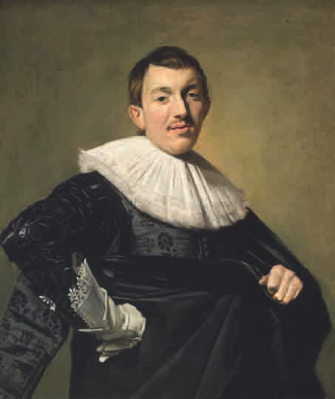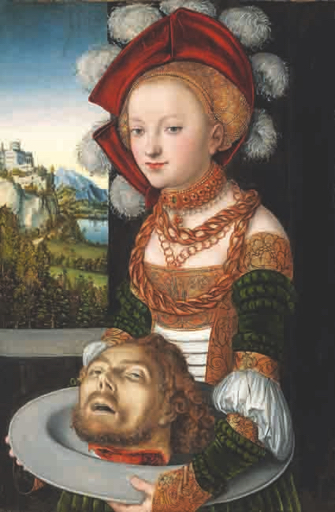Visiting Art from Budapest
Brings a Galaxy of Stars

“Portrait d’Homme” (1634), by Frans Hals. © Musée des Beaux-Arts, Budapest 2016
The current show at the Musée du Luxembourg, “Chefs-d’Œuvre de Budapest,” promises a panoply of superstars from the history of art, and it delivers. In fact, the exhibition itself is something of mini-survey of the history of European art, beginning in the 14th century and continuing into the early 20th century.
There is nothing in particular holding this disparate group of works together except that they are all on loan from the Szépmüvészeti Múzeum in Budapest while it is being renovated, but who cares when there are so many masterpieces to revel in.
In the first room of the chronologically presented show, you will be struck by a sinuous, elongated Hungarian Gothic wooden statue dating from the early 15th century. Of breathtaking grace and beauty, it depicts the fourth-century martyr Saint Dorothy on the way to her end, holding in her hand a basket of apples and roses from paradise brought to her by an angel.
Another outstanding feminine portrait is a painting by Liberale da Verona of the Virgin and Child with an angel, painted while the

“Vierge à l’Enfant avec un Ange” (c. 1468-70), by Liberale da Verona. © Musée des Beaux-Arts, Budapest 2016
artist was in Siena between 1466 and ’76. Although retaining a few archaic features like the gold background, it exhibits all the humanity, light-sculpted forms and human emotion introduced to painting by the Italian Renaissance.
The next room, covering the German Renaissance, offers one stunner after another: marvellously intricate drawings of insects and amphibians by Hans Hoffmann, a masterful oil portrait of a young man by Albrecht Dürer, and

“Salomé avec la Tête de Saint Jean Baptiste” (1526-30), by Lucas Cranach the Elder. © Musée des Beaux-Arts, Budapest 2016 Lucas Cranach the Elder’s “Salome with the Head of John the Baptist” (1526-30), which shows the richly dressed Salome with an oversized head and looking very pleased with herself as she holds the Baptist’s head on a silver platter, his eyes and mouth half open. Her self-satisfaction was apparently Cranach’s way of illustrating the perfidy of women. The artist’s studio painted another work in the room: the affecting “The Lamentation of Christ with Saints Wolfgang and Helen and Unidentified Donors.”
The “Cinquecento” brings us not only the Italians Bassano, Veronese, Tintoretto and more, but also the added bonus of a splendid small bronze statue of a rearing horse and rider attributed to Leonardo da Vinci. Among the Spaniards, the next room offers not one, but three works, by El Greco, perhaps not his most spectacular, but still Greco and thus worth seeing, as is Ribera’s St. Jerome.
From the Dutch Golden Age, we have a lovely chiaroscuro drawing by Rembrandt and a wonderful portrait of a man by that genius at capturing expressions and personality, Frans Hals. Another brilliant portrait, of the head of a man, is by Rubens; executed by the master as a reusable model for his apprentices – the same face cropped up in many other paintings by his workshop.
From the 19th century, we have examples of works by Manet, Monet, Cézanne, Gauguin and even a drawing by Van Gogh. A lesser-known painter, Pál Szinyei Merse, supposedly the precursor to Hungarian Impressionism, is represented by “L’Alouette” (1882), a strange and fascinating painting of a naked woman lying on green, green grass gazing dreamily at the clouds floating above her head in the blue, blue sky, a work that was savaged by the critics in the artist’s time.
It was refreshing to see more Hungarian painters in the final room, among them József Rippl-Rónai, whose “Femme à la Cage” (1892), which was used for the exhibition poster, was painted while he lived in Paris and shows the influence of Symbolism and the Nabis.
I can’t think of a better way to spend a couple of hours than in meeting this galaxy of visiting art-history stars, especially since it will be some time before these paintings will again be on show in the currently closed Budapest museum.
Musée du Luxembourg: 19, rue de Vaugirard, 75006 Paris. Métro: Saint-Sulpice or Odéon. RER: Luxembourg. Tel.: 01 40 13 62 00. Open daily, 10am-7pm, until 9:30pm on Friday. Admission: €12. Through July 10, 2016.
Reader reaction: Click here to respond to this article (your response may be published on this page and is subject to editing).
More reviews of Paris art shows.
© 2016 Paris Update
Favorite